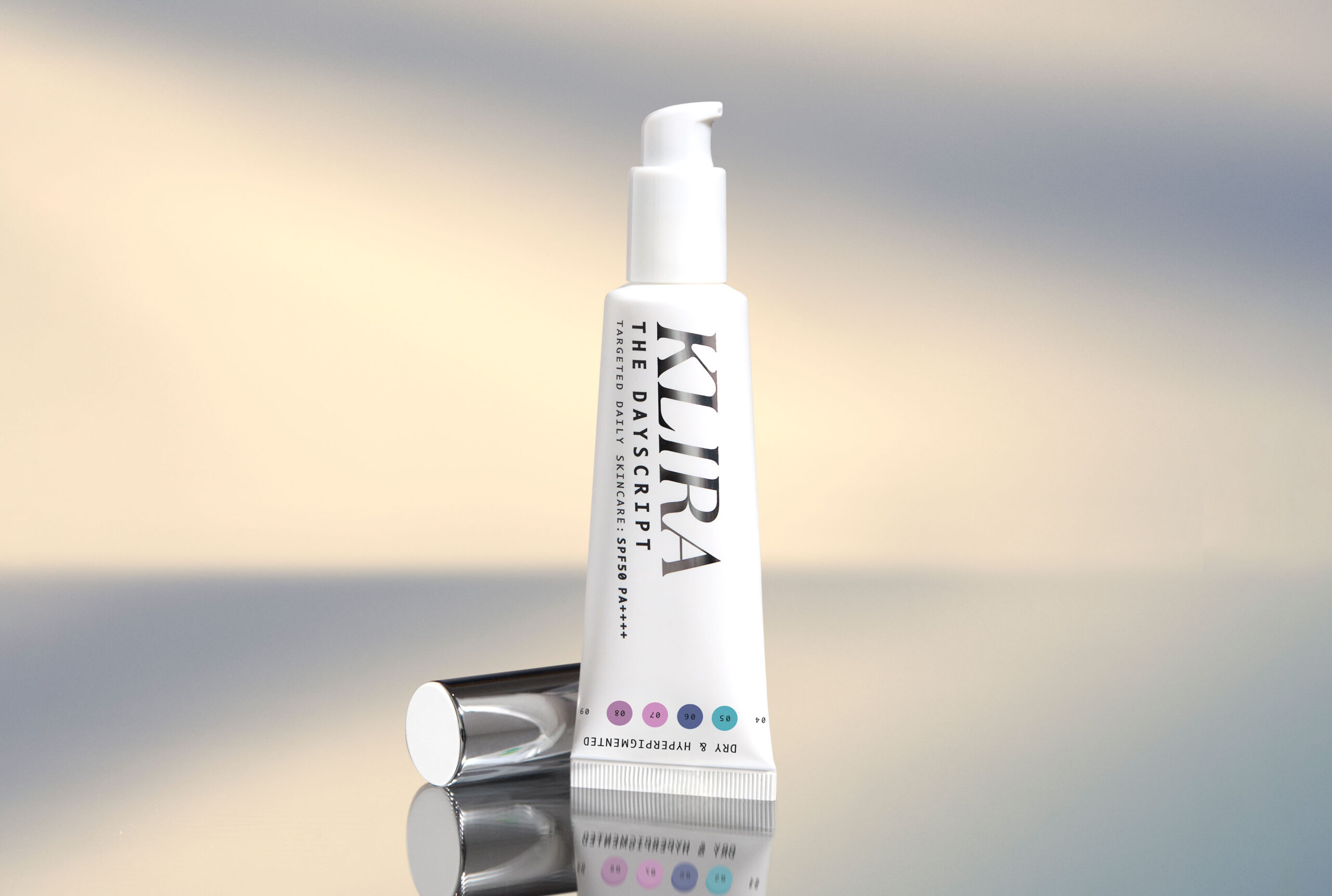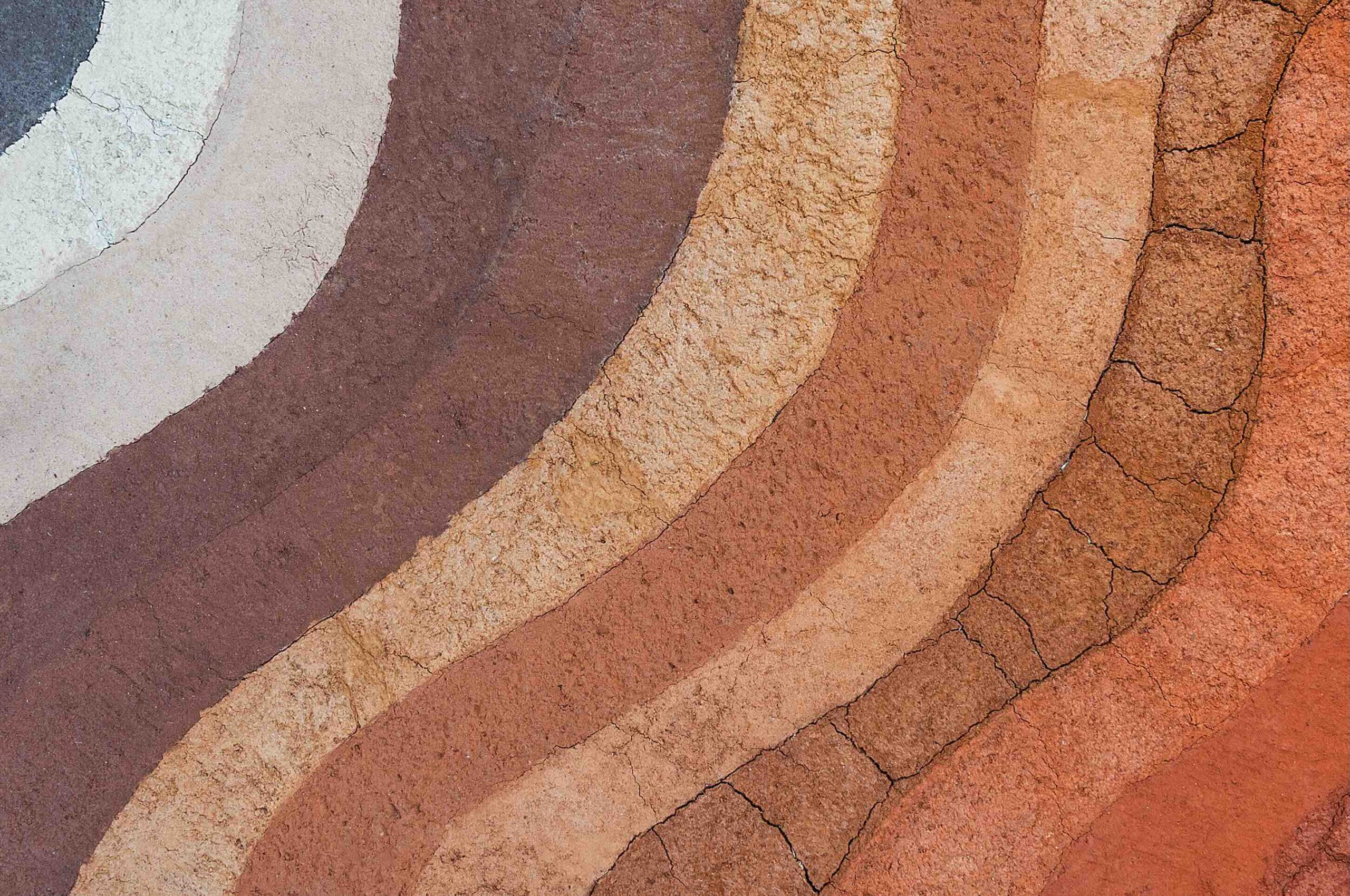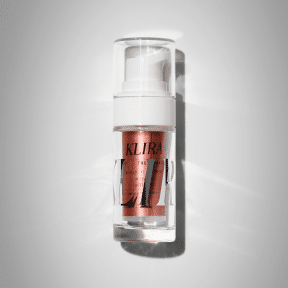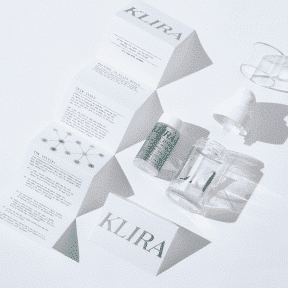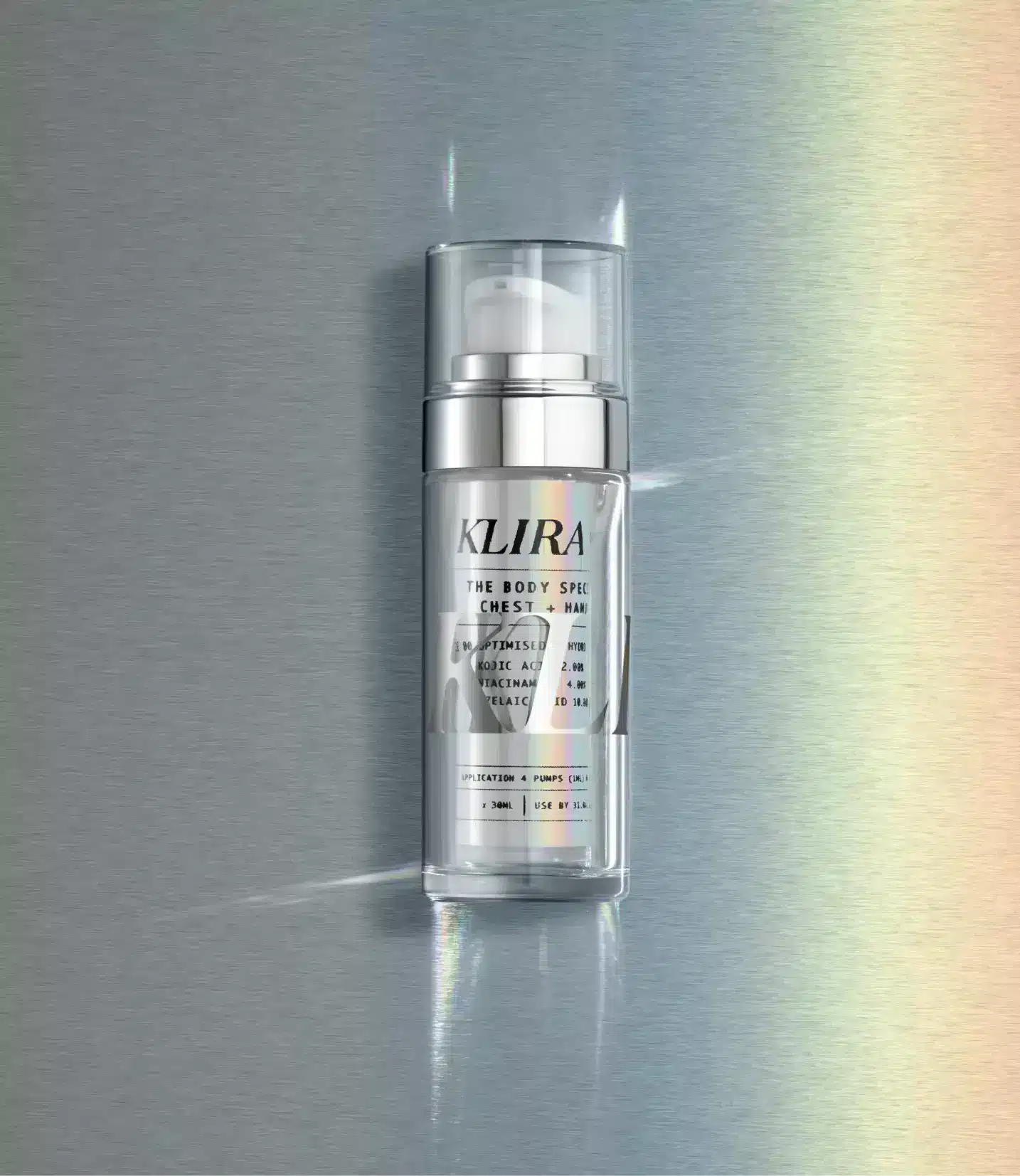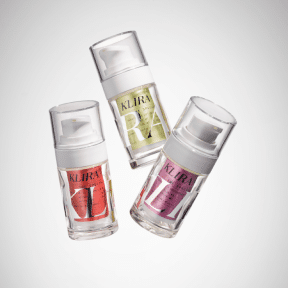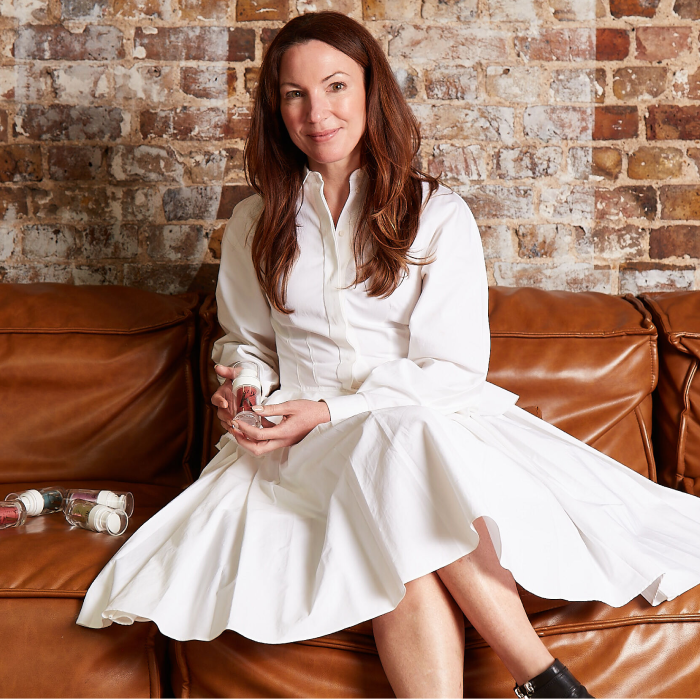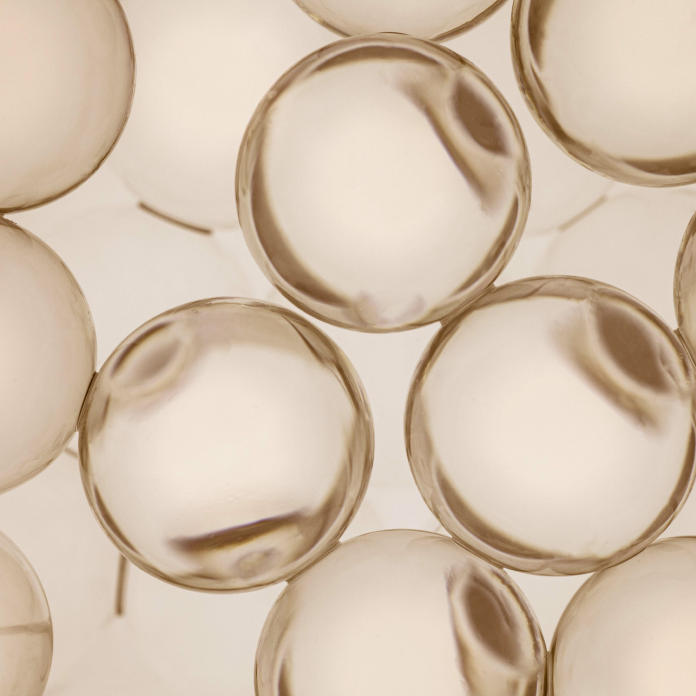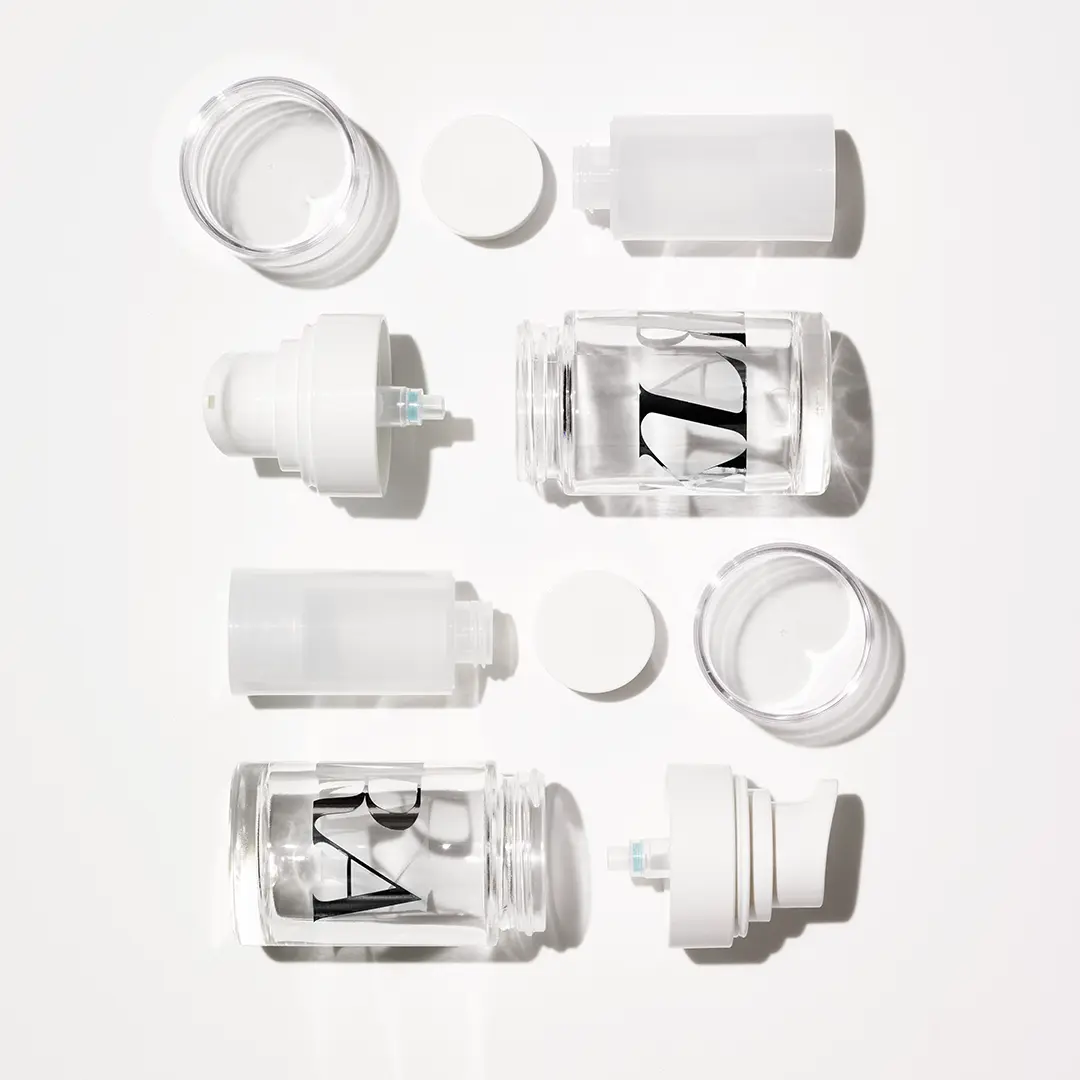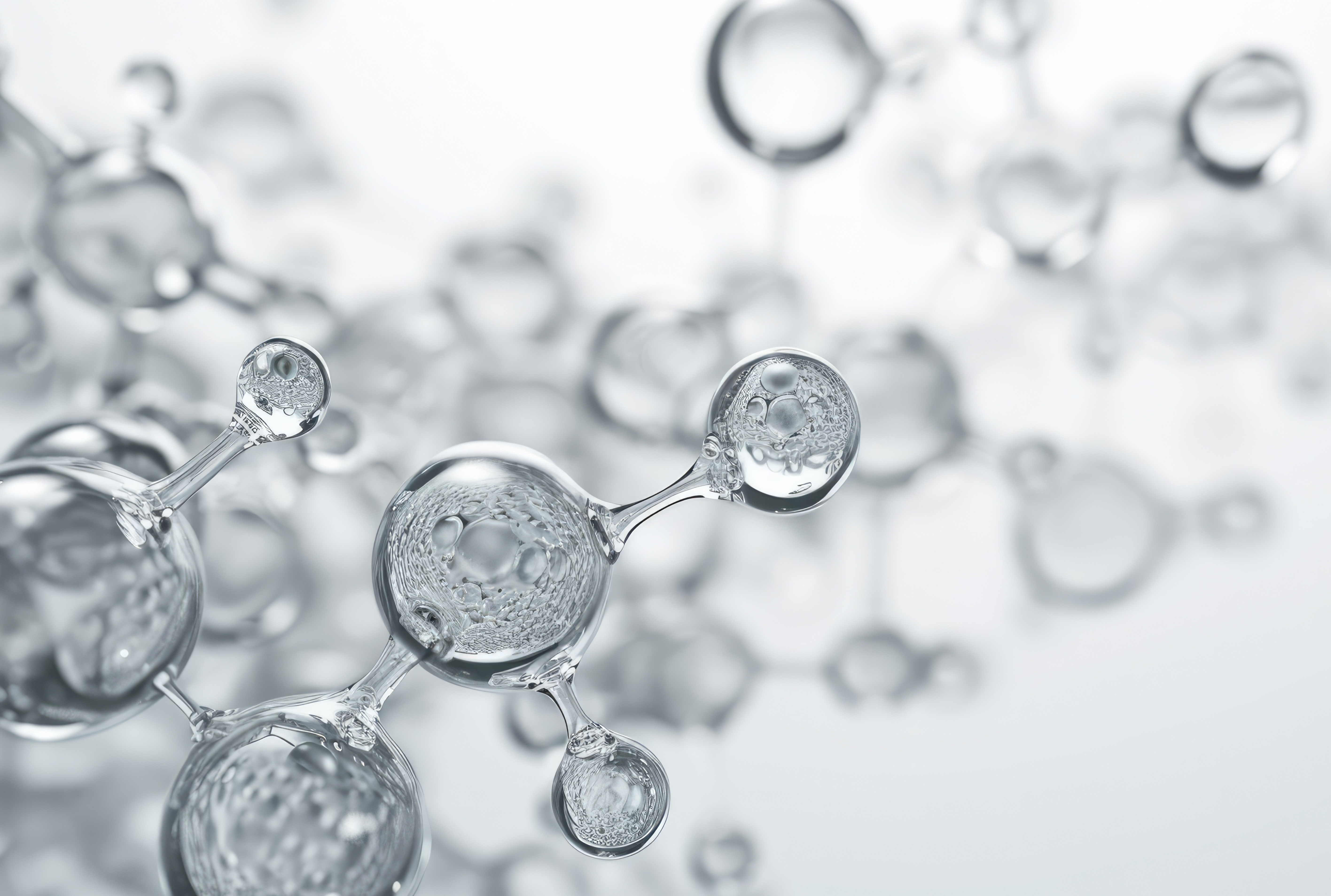
Hydrolysed collagen peptides – often called “Botox in a bottle” – are some of skincare’s hydration heroes. They’re brilliant moisturisers that reduce dryness and wrinkles by increasing hydration in the skin’s outer layer (known as the stratum corneum).
Peptides are also thought to be involved in cell signalling, specifically in telling the skin to rebuild and repair itself by making more collagen (although the evidence is still emerging).
Incorporating peptide products into your skincare routine is generally far more effective for increasing your natural collagen levels than taking a collagen supplement!
The Klira Special offers the most personalised formula for facial skin on the market—with each special containing up to 11 hand-selected ingredients (including peptides!) that work in synergy for your SkinSize™.
Not to mention the new Body Special, which allows you to achieve similarly excellent results across your chest, hands, and body skin.
What are peptides in skincare?
Peptides are short chains of amino acids that support hydration and help improve skin resilience. By attracting and retaining moisture, they keep the skin plump, reducing the appearance of fine lines and wrinkles.
Beyond hydration, some peptides also act as messengers, signalling the skin to boost collagen production via its natural repair mechanisms.
It is a common misconception that peptides are absorbed into the skin and used to make collagen. Instead, peptides trigger the skin to produce collagen naturally.
This potential role in firming and strengthening the skin is why peptides are widely used in advanced skincare formulations. However, research into their collagen-stimulating effects is still developing.
Why Klira uses peptides in skincare
At Klira, we harness the power of peptides to enhance skin hydration and overall health.
Personalised formulation:
The Klira Special is the most customised skincare formula available, containing up to 11 expert-selected ingredients—including peptides—designed specifically for your SkinSize™.
Comprehensive skincare:
The new Body Special extends these benefits beyond the face, providing targeted hydration and repair for areas like the chest, hands, and body.
How peptides fit into your skincare routine
If you’re looking to enhance skin hydration and support long-term skin health, peptides are a valuable addition to your skincare routine. Here’s how to get the most out of them:
Use peptides consistently:
Regular application helps maintain hydration and reinforces the skin barrier. You can apply your Klira Special nightly, as the final step in your skincare routine, to achieve this.
Pair peptides with other actives:
They work well alongside ingredients like Hyaluronic Acid for hydration and Ceramides for barrier repair. The Klira Special already combines these ingredients for you.
Layering peptide skincare products:
For dedicated peptide users, you could consider a peptide eye cream after your nighttime moisturiser, and before your Klira Special. We love the CeraVe Skin Renewing Eye Cream with Peptide Complex, which hydrates the delicate skin around the eyes, reducing the appearance of fine lines and crow’s feet.
Your guide to the perfect peptide skincare routine:
Mornings:
Cleanser: Wash your face with a gentle, lipid-replenishing cleanser, that maintains moisture without stripping the skin. We love La Roche-Posay Lipikar Syndet AP+ Cream Wash and Avène XeraCalm A.D Lipid-Replenishing Cleansing Oil.
Vitamin C & peptide serum (optional): If you’ve mastered daily SPF and Klira use, the next step is adding Vitamin C in the mornings. Some serums even combine Vitamin C and peptides—like the Obagi Professional-C Peptide Complex Serum. Vitamin C acts as an antioxidant shield against pollution and oxidative stress, gradually brightening skin.
Moisturiser (optional): If you have dry skin, try the CeraVe Skin Renewing Day Cream SPF 30, which contains peptides for extra hydration.
SPF (non-negotiable!): There’s no point in using peptides if you’re not protecting your skin with broad-spectrum SPF daily. The most science-backed approach for youthful skin is broad-spectrum sunscreen with UVA and UVB protection. Dermatologists highly recommend La Roche-Posay UVMune 400 SPF50, which suits all skin types. If you’re on a budget, check out The Altruist SPF50, designed by dermatologists for affordability. Remember: reapply throughout the day for optimal protection!
Evenings:
Cleanser: Same as above.
Moisturiser: A night cream is essential when using Klira. Apply your evening moisturiser 30-60 minutes before your Klira Special. We love La Roche-Posay AP+M Moisturiser—Dr Emma raves about this on her After Hours Skin Clinic podcast.
Eye cream (optional): As mentioned above, CeraVe Skin Renewing Eye Cream is an excellent choice.
Klira Special: Your ultimate, personalised prescription skincare. Klira contains peptides that signal collagen production and Tretinoin, which speeds up skin cell turnover—helping to unclog pores and slow signs of ageing.
The Body Special: Don’t neglect your body’s skin! Prevention is better than cure, and the peptides in our Body Special will help maintain smooth, youthful skin over time.
FAQs
Are peptides safe for all skin types?
Yes! Peptides are gentle and suitable for all skin types, including sensitive skin.
How long does it take to see results with peptides?
Most users notice improved hydration within a few weeks, with firmer, smoother skin appearing gradually over time with consistent use.
Can peptides replace Retinol or vitamin C?
Peptides work best alongside other active ingredients. We suggest starting with a simple routine: SPF in the morning and Klira at night (which already contains a retinoid). After a few months, you can introduce Vitamin C in the mornings.
Which is better—Hyaluronic Acid or peptides?
If hydration is your main concern, Hyaluronic Acid attracts and retains moisture. If collagen support and anti-ageing are your focus, peptides signal the skin to boost collagen and elastin production. The best option? Use both! The great news? Klira Special contains both.
Final thoughts
Peptides are a key player in Klira’s science-backed formulations, helping to maintain youthful, hydrated skin. Whether through the Klira Special or Body Special, or both, incorporating peptides into your skincare routine supports skin health and long-term radiance.
Discover your personalised formula today!
Our Dermatology Team will review your SkinSize™ Analysis, medical information, and photos to decide which ingredients you will receive in your bespoke formula.
